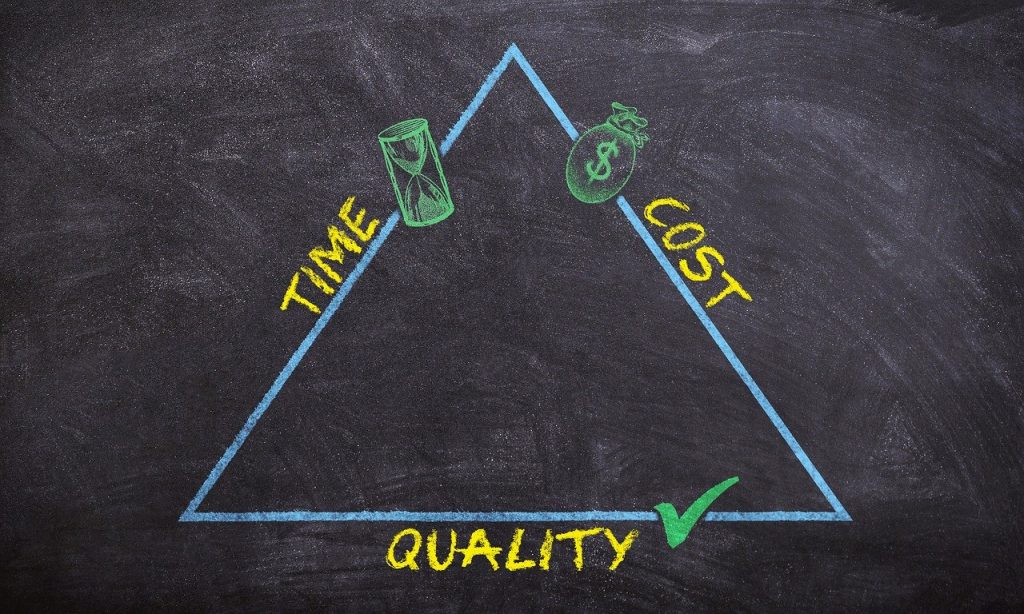Are all public sector projects doomed?
Public Sector organisations are under constant pressure to save money. Often this can mean outsourcing business services to third parties, adopting a shared service model or more ambitious IT transformation projects hoping to solve everything.
We all know the official sales pitch, more agility, resiliency, flexibility, yada yada. But managing a transition to a new service model or IT platform can be crazily complex and often, even communication can be messed up, resulting in (what I see) nearly 80% of digital projects failing just because of comms!
Thoroughly recommend you read the last years IPA Annual reports on public sector IT projects here

Often, when working on new service or platform projects, the transition to the new service is often forgotten. This ‘service transition’ phase generally brings with it a reduction in quality and control of services in the beginning because their are so many things not thought about. Further, employee resistance to the change, misunderstood roles and responsibilities (see communication) and the inevitable longer-than-expected transitions and spiralling costs (which can often undermine many of the cost savings which drove the project to begin with)
They are many factors which can make or break a service transition. While the specific business issues will vary between each organisation they commonly include;
Disagreement between stakeholders: One party may want to commoditise and optimise the service while the other wants services to be personalised to their requirements and integrated with their other services.
Mismatch in expectations: Where services are provided by a number of different suppliers e.g. the service target achievement for component services needs to be coordinated; there will be dependencies that need to be managed to ensure the overall service received meets customer expectations. This is so often got wrong, with vendors being mismanaged during the service transition phase.
Different usage models for the same service: Existing services, which are similar or identical in nature, might be managed and used in different ways and by different teams within the same organisation, resulting in different expectations for the future of the service.
Inflexible contracts with external suppliers: A partnership between suppliers and customers needs to be flexible and open; not all issues can be anticipated at the start of a transition and a good relationship between all parties is crucial to overcoming the hurdles and challenges. I talk about vendor management a lot.
A lack of consideration of the impact on service management functions: A change to services and suppliers will impact on the existing service management functions; this will impact staff and will need careful management.
Maintaining quality and performance: When integrating new or changed services in a multi-vendor environment. Read about multi-vendor orchestration here
Time management: The effort and time involved moving from a single-sourced supplier to a multi-supplier model can be far greater than anticipated.

Lack of flexibility within the organisation: Changing business models and IT supply models requires everyone in the organisation to be flexible to adapt to new ways of working. Read about my self-designed thin TOM model here
Lack of knowledge transfer: Knowledge transfer is vital for a successful service transition. It is not just technical knowledge that needs to be transferred, it must include information about processes, procedures, tools, governance, infrastructure, security, culture and relationships. Managing the incumbent provider can be difficult – they may not want to provide the information and knowledge and this makes managing the exit strategy crucial. The new service provider will also be unable to provide accurate SLAs and other performance measures if they don’t have complete and coherent understanding of the role of the incumbent.
Individual agendas: Strong beliefs that the current way of doing things is the best and not eager to embrace change; use information flows to their own advantage; managers who don’t communicate with staff or are looking to improve their individual position and not their teams.
How to win
To fully manage a successful service transition requires complete business transformation like it or not. You can’t just wholesale plug in a new platform or service and expect the business to catch up. The transformation has to start with the people and without a doubt a lot of public sector projects fail because of the lack of thought around transformation. Read my thoughts on transformation here
Cultural, operational and process changes need to be planned, considered & well thought out, alongside building strong relationships with the future providers, and a solid Target Operating Model with a successful transformation plan will help the organisation deliver a service more seamlessly, with a much lower risk to live operations & ongoing service levels.
Staff will be retained, re-skilled & hopefully fully adopt the new ways of working as long as an overall transformation plan is put into practice.
The bottom line is if you’re implementing a service or platform change, which will impact the way your business works or the way your people will work, you CANNOT be successful without a comprehensive service transition strategy. Failure to lay solid groundwork and anticipate what the future looks like will be an absolute path to failure.
And let’s be honest, the public sector has had enough of those.




